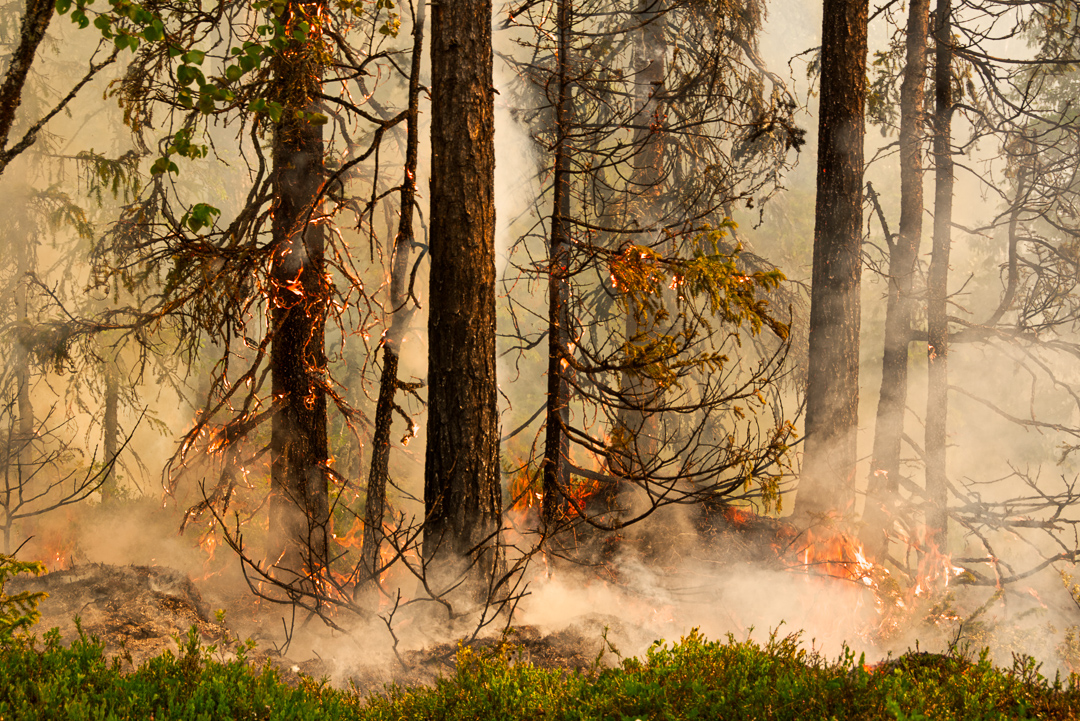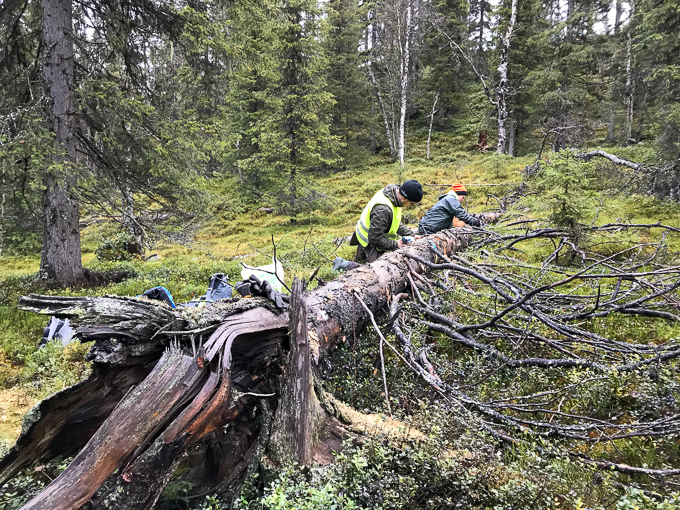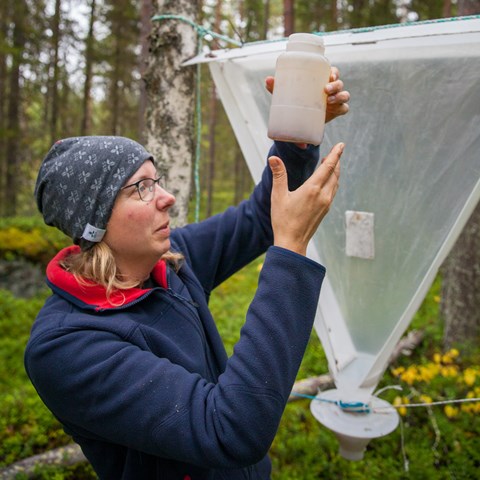The UN has declared 2021 – 2030 to the decade on ecosystems restoration. To fulfill global as well as EU and Swedish targets knowledge on ecological restoration and biodiversity is fundamental.
Our research with the subject area restoration ecology focus on how human land-use influence ecosystem function and biodiversity and if ecological restoration can be used to mitigate negative effect of land-use.
We study the ecology of individual species and species communities of animals, plants and fungi. We assess how different species are influenced on e.g. silviculture, mining and hydropower, historically, currently, and in the future and develop new methods to mitigate negative effect on biodiversity and ecosystem function.

Prescribed burn close to Storuman 2020. Photo: Emelie Fredriksson
Large-scale and long-term field experiments
We have initiated a number of unique large-scale long-term field experiments nationally and internationally were we study the effects of different types of ecological restoration and silvicultural practices (e.g., prescribed burning, gap-cuttings, creations and translocations of dead wood, restoration of deciduous forests, special thinning, uneven-aged forest managements) on biodiversity in the short and long-term.
For example, we assess how insects, birds, vascular plants, wood fungi, bryophytes and lichens are influences by prescribed burning and gap-cutting including dead wood creation in a large-scale I the county of Västerbotten. In additions, we study the effect of uneven-aged forest management on forest biodiversity. Furthermore, we investigate if forest restoration of tropical forest using indigenous tree species can help preserve their unique biodiversity.
In a newly started field experiment in the vicinity of the Aitik mine we investigate if it is possible to compensate for negative effect of mining on biodiversity by translocation of dead wood and associated organisms.

Selection and marking of dead trees to be translocated. Photo: Maria Nordlund
The important dead trees
A central theme in many of our projects are the forest trees that are important for biodiversity when alive but even more so when their dead. The dead trees, referred to as dead wood, will continue to support a wide variety of organism decades or even centuries after they died. In Sweden as well as many other countries are dead wood has become a limited resource for many thousands of species that are totally dependent on this resource and many of them are therefore threatened today.
We study the natural processes that creates dead wood, e.g. forest fires, storms and outbreaks of pest and pathogens but also how human activity like forestry and mining influence the availability and quality of dead wood and thus associated wood living species. In addition, we assess if ecological restoration can compensate for the loss of high quality dead wood.
We run project were we translocate or produce different types of dead wood on site, were we compare the effect of prescribed burning and wildfire on dead wood availability and diversity and associated species, and were we compare conventional forestry with forestry with a higher degree of environmental concern.
We create knowledge that can be applied
Our aim is to produce world class science that can be used in society to help fulfill national and international goals for biodiversity conservation. We collaborate with industry, governmental organizations, NGO´s, and with other researcher both nationally and internationally.


